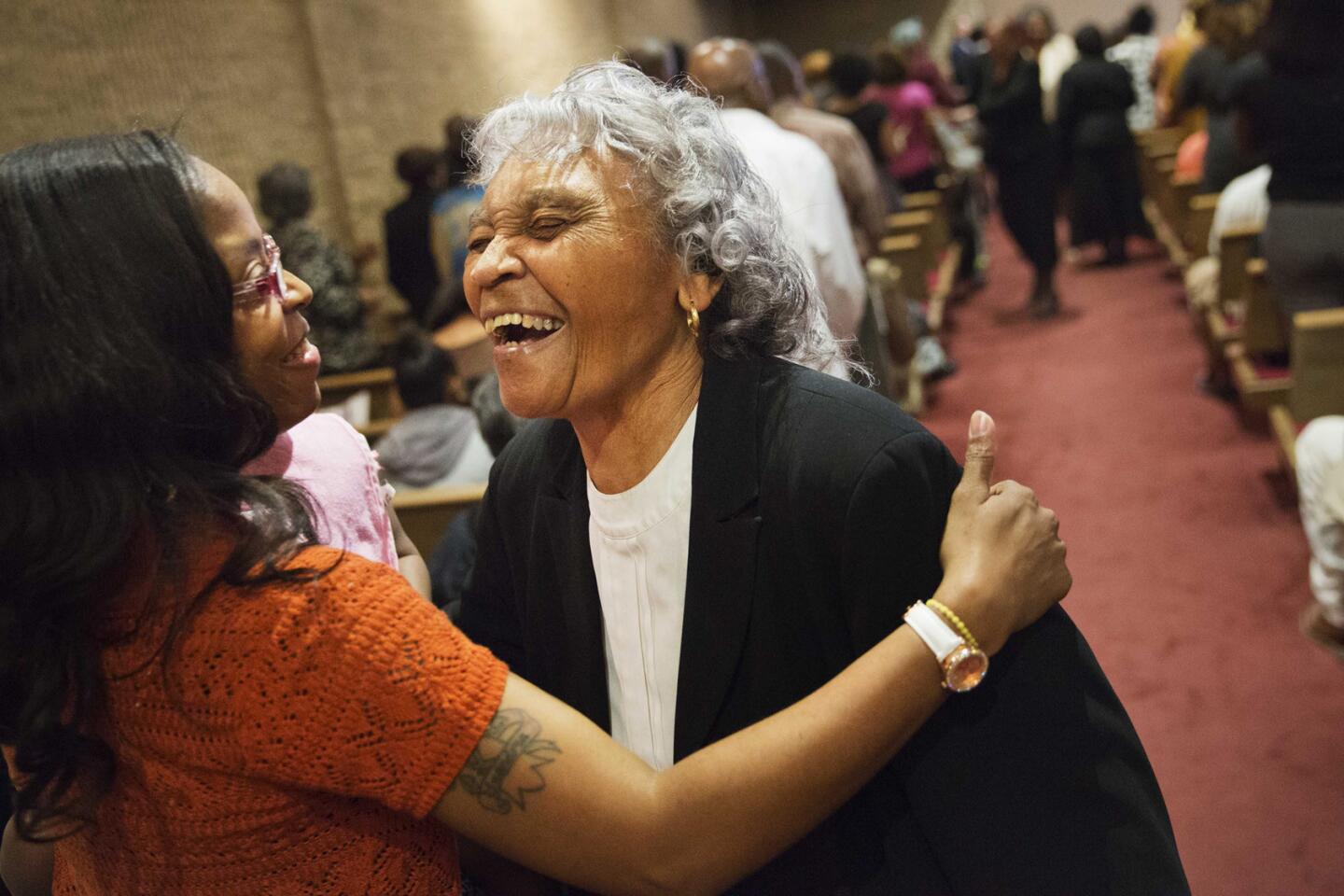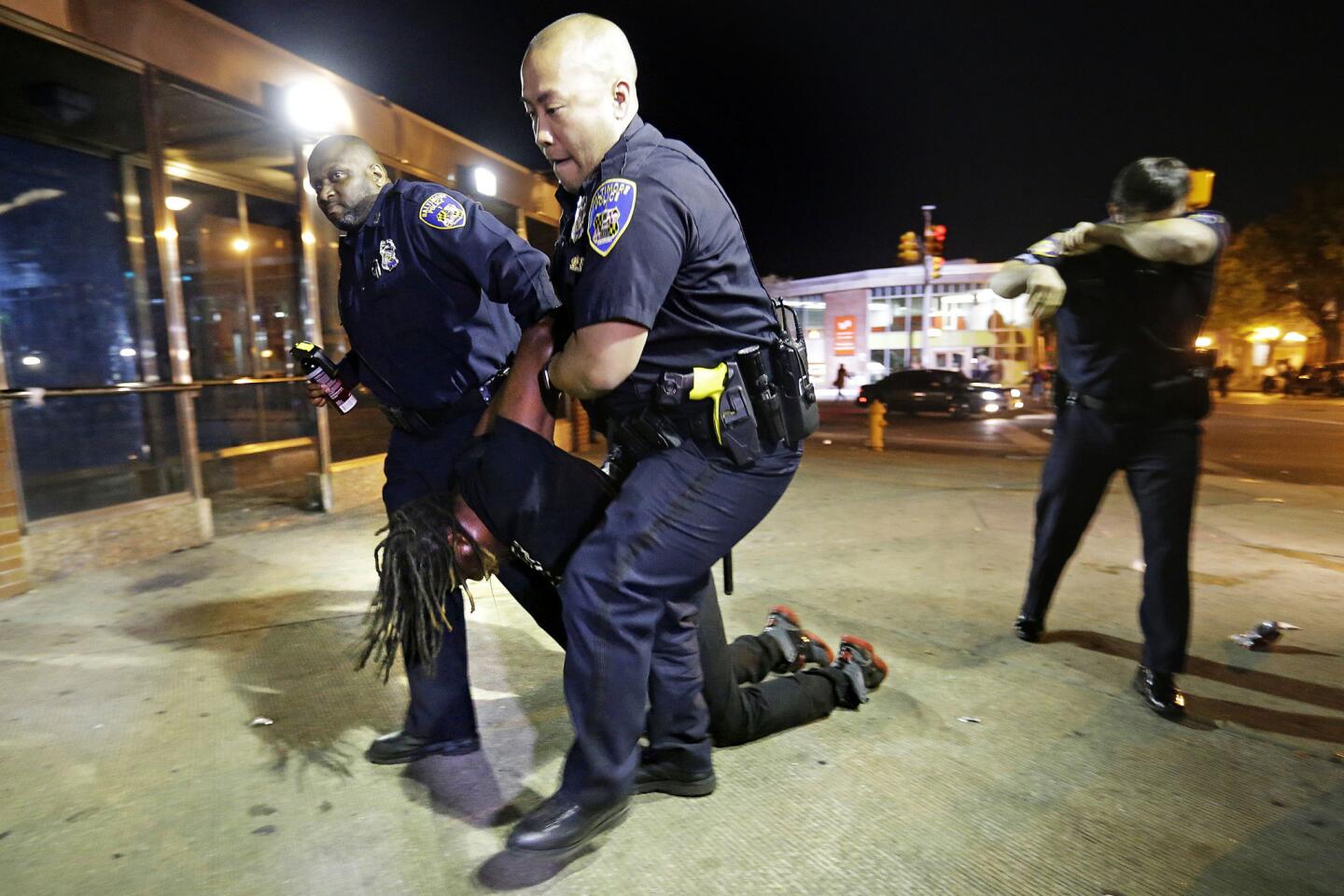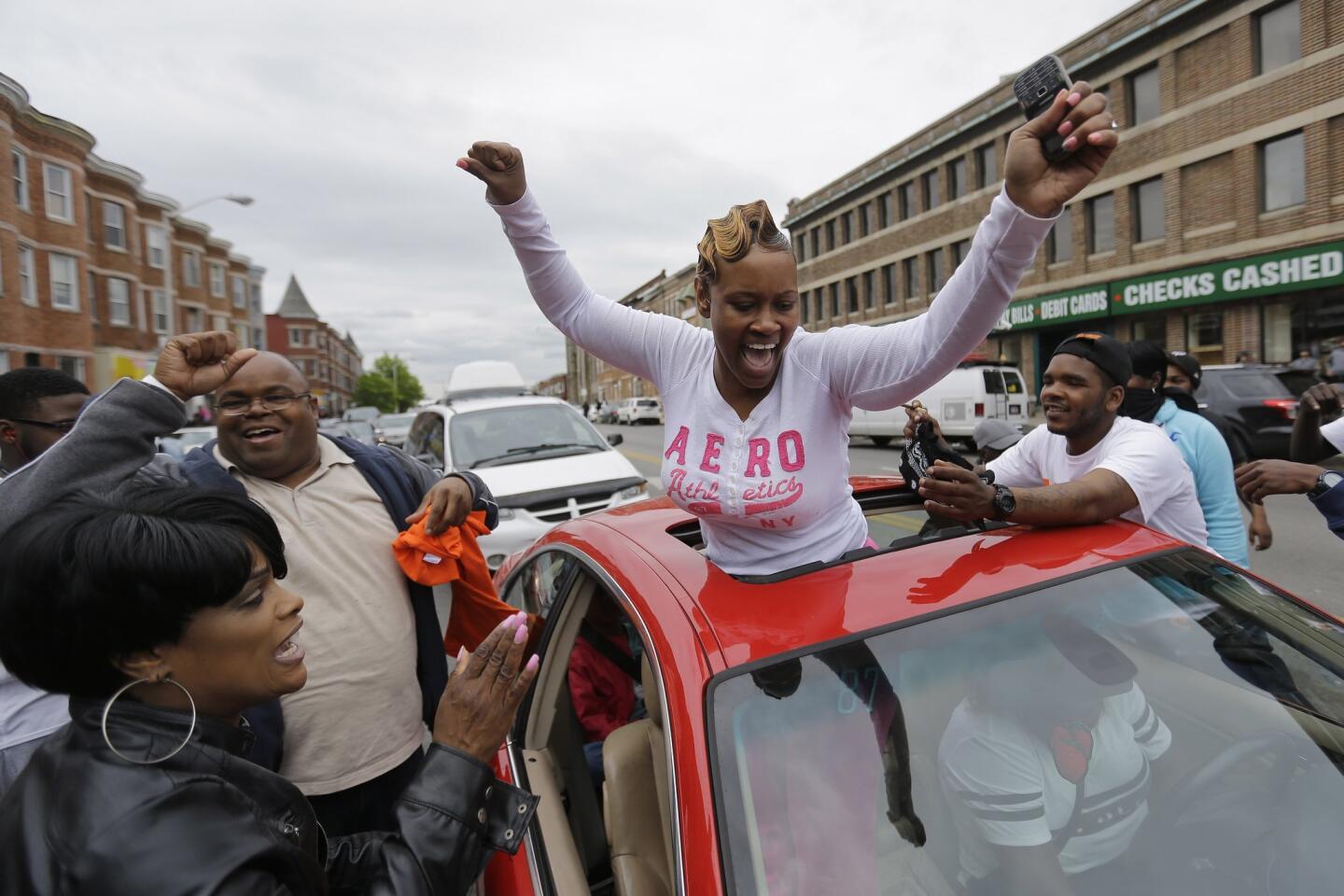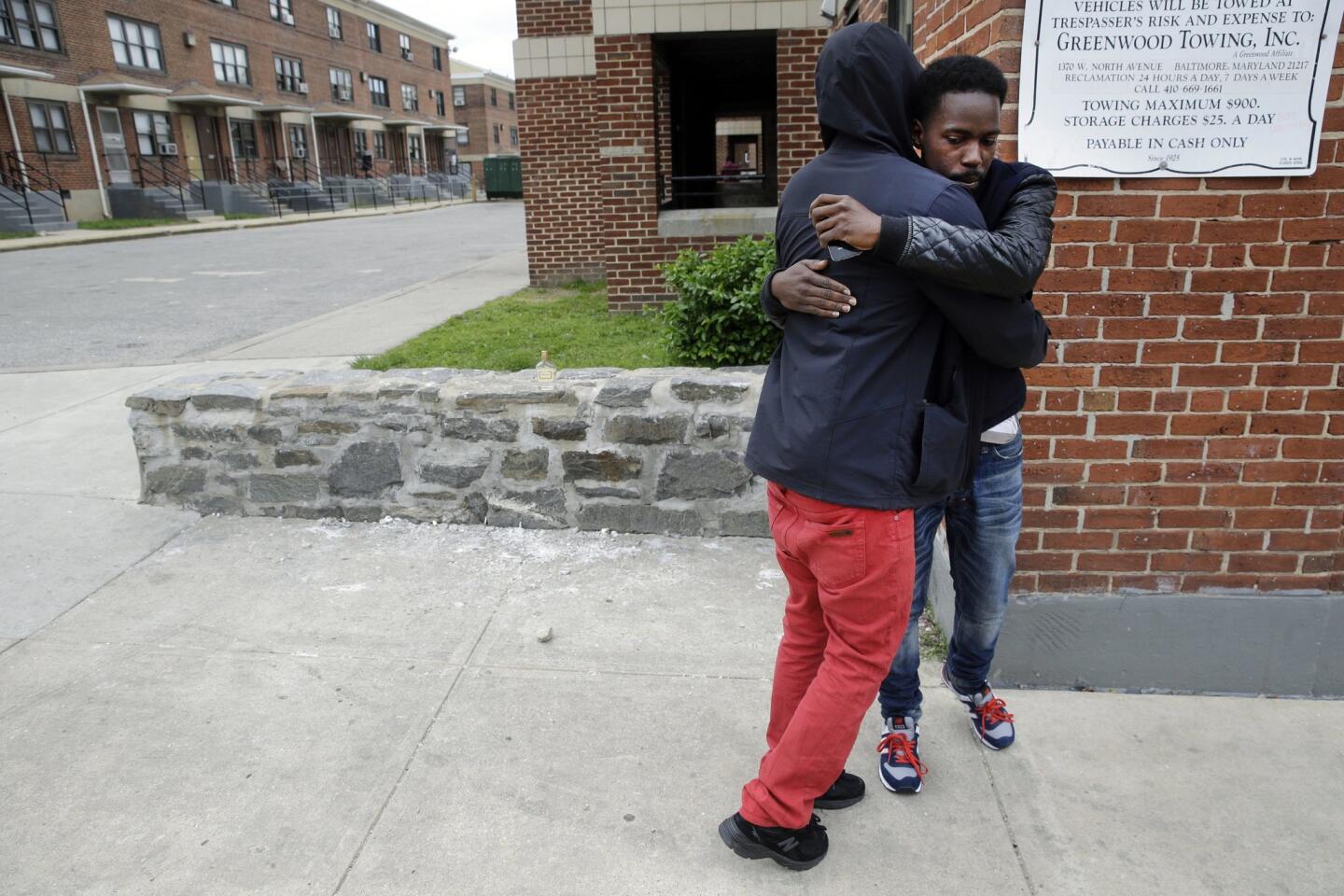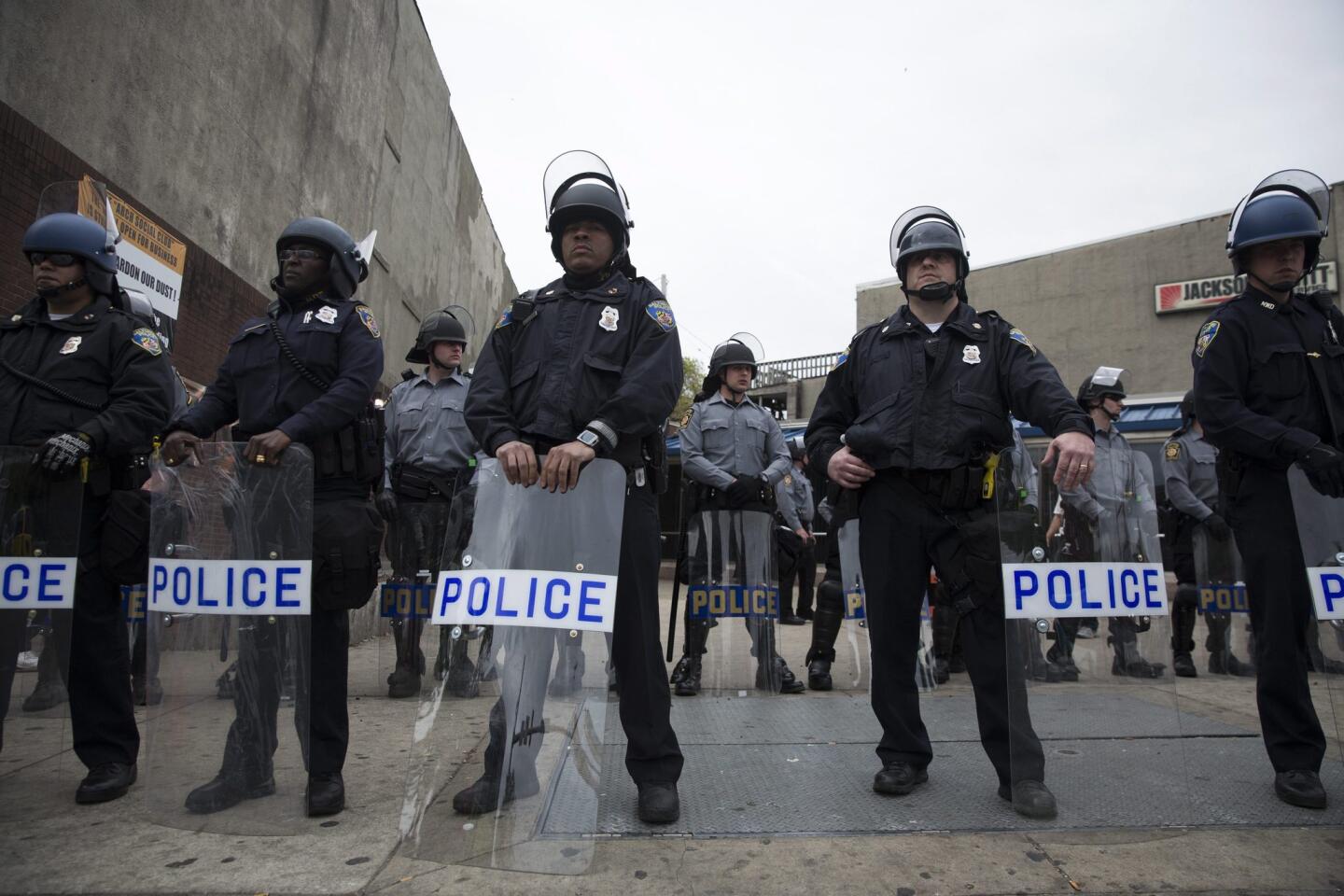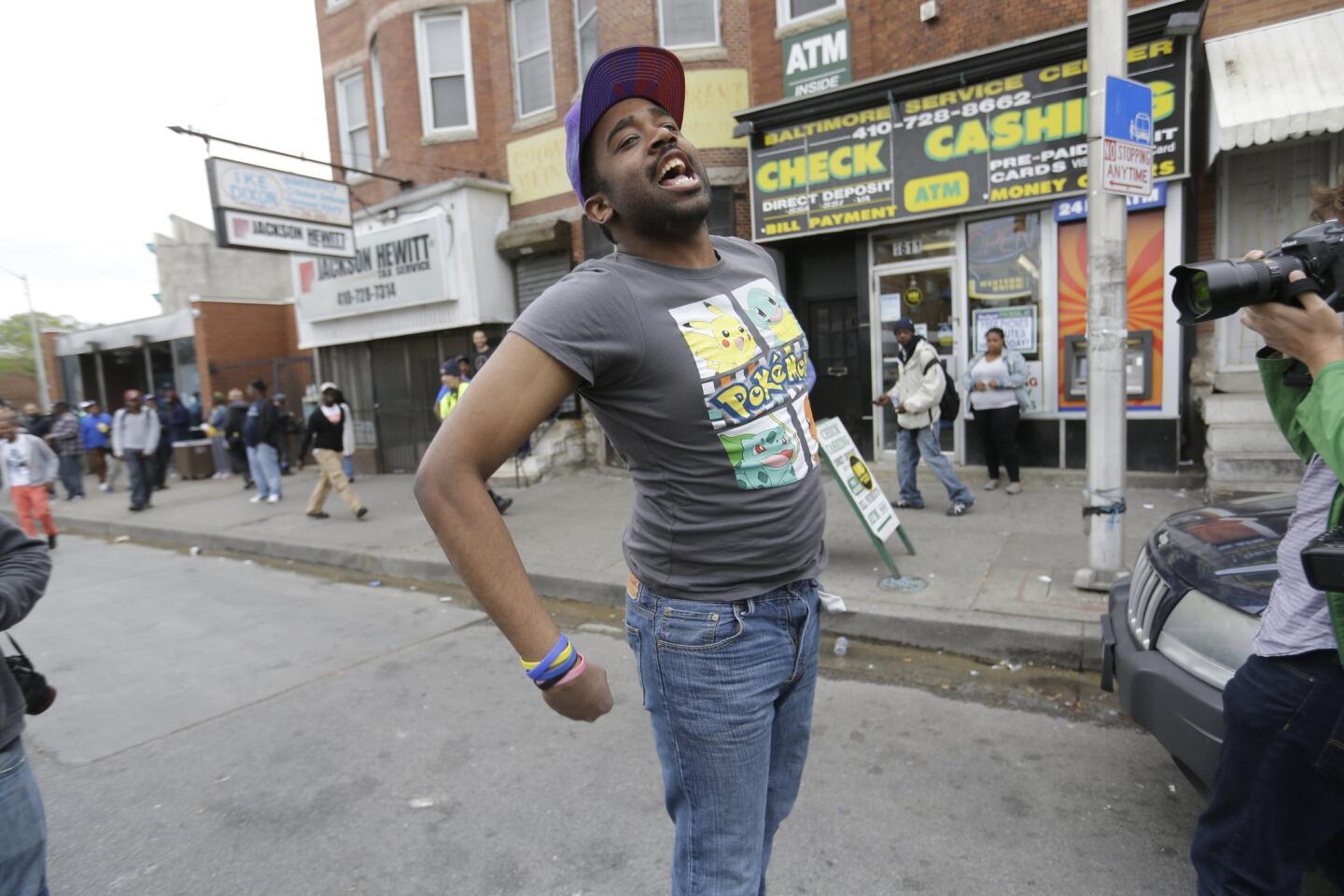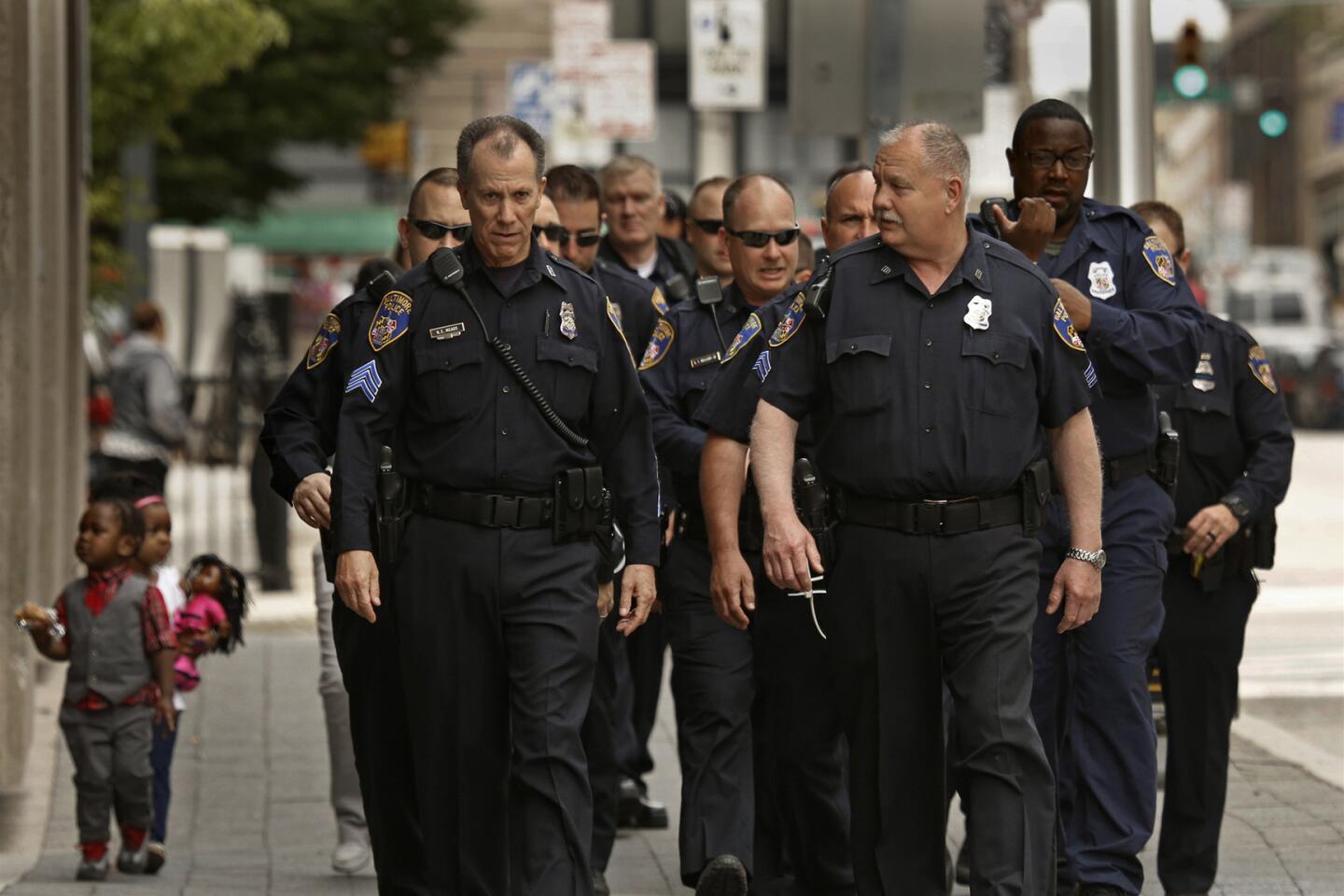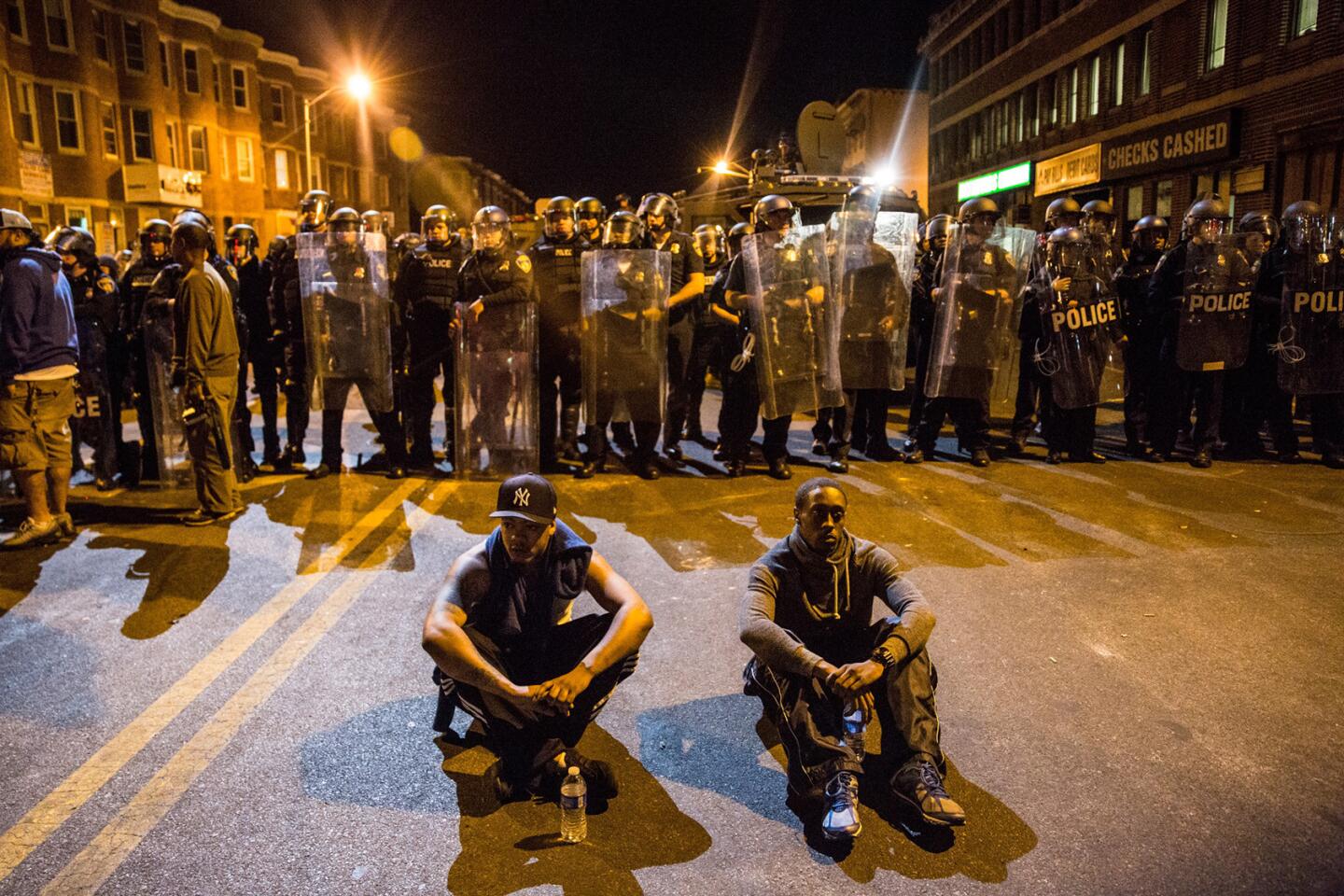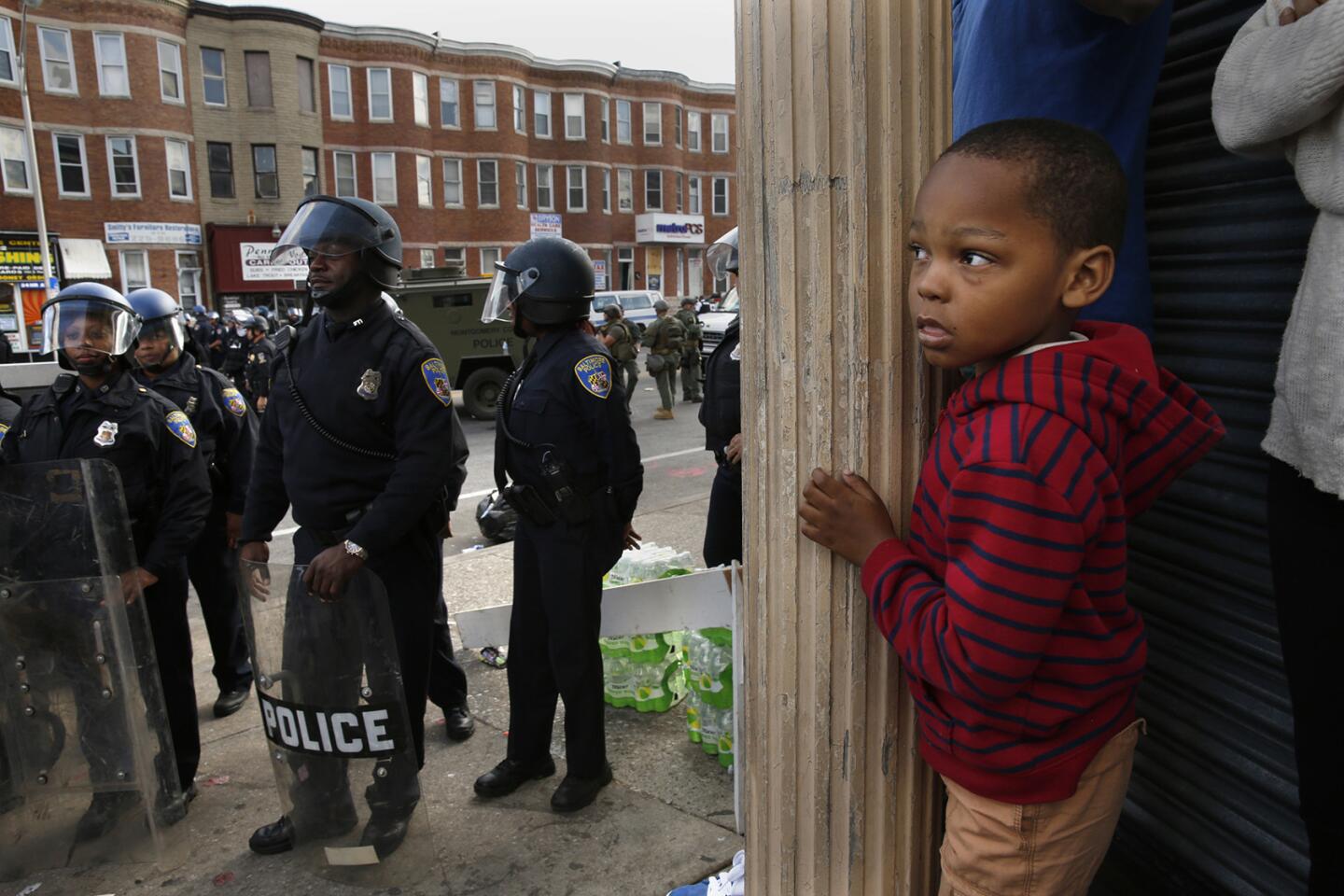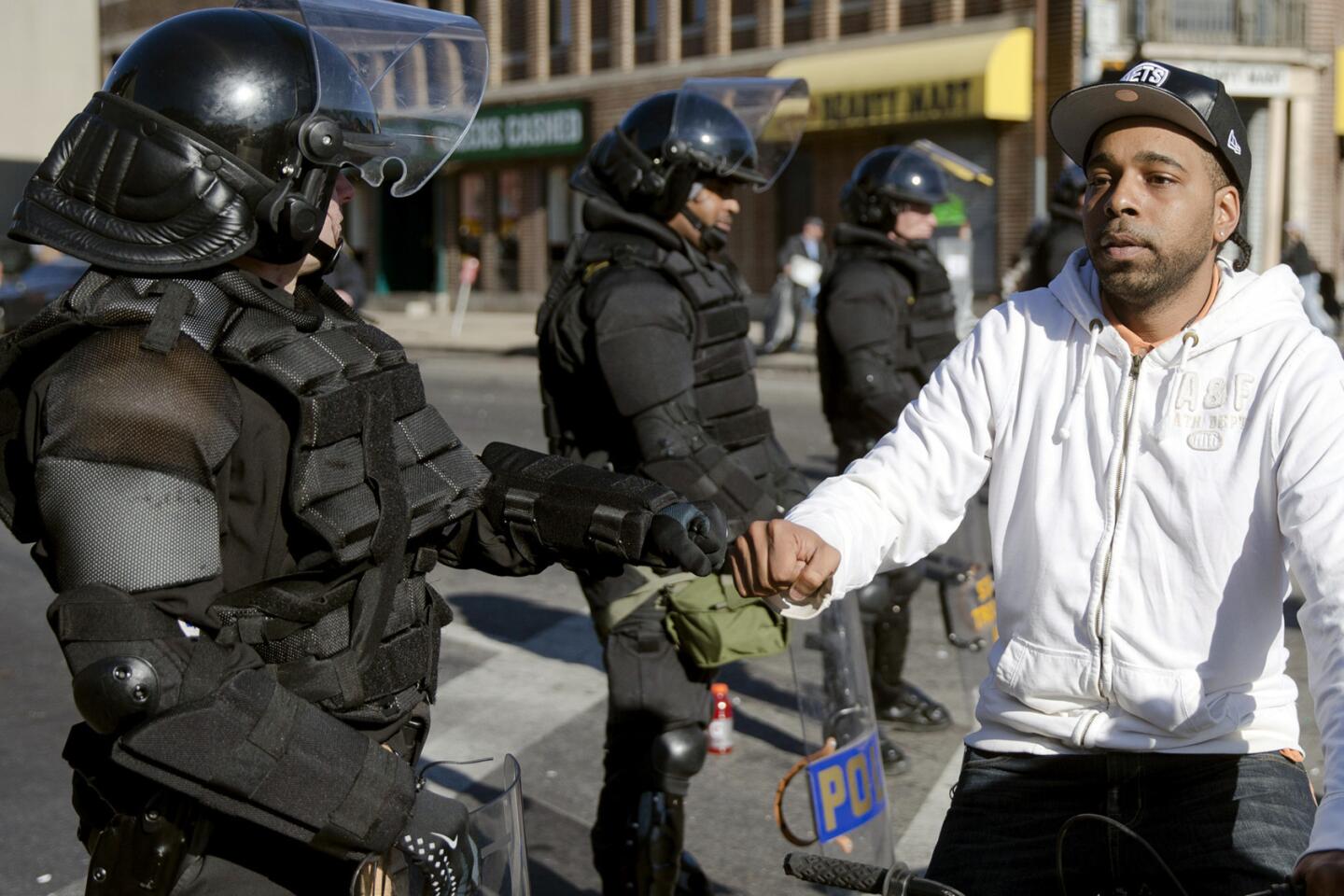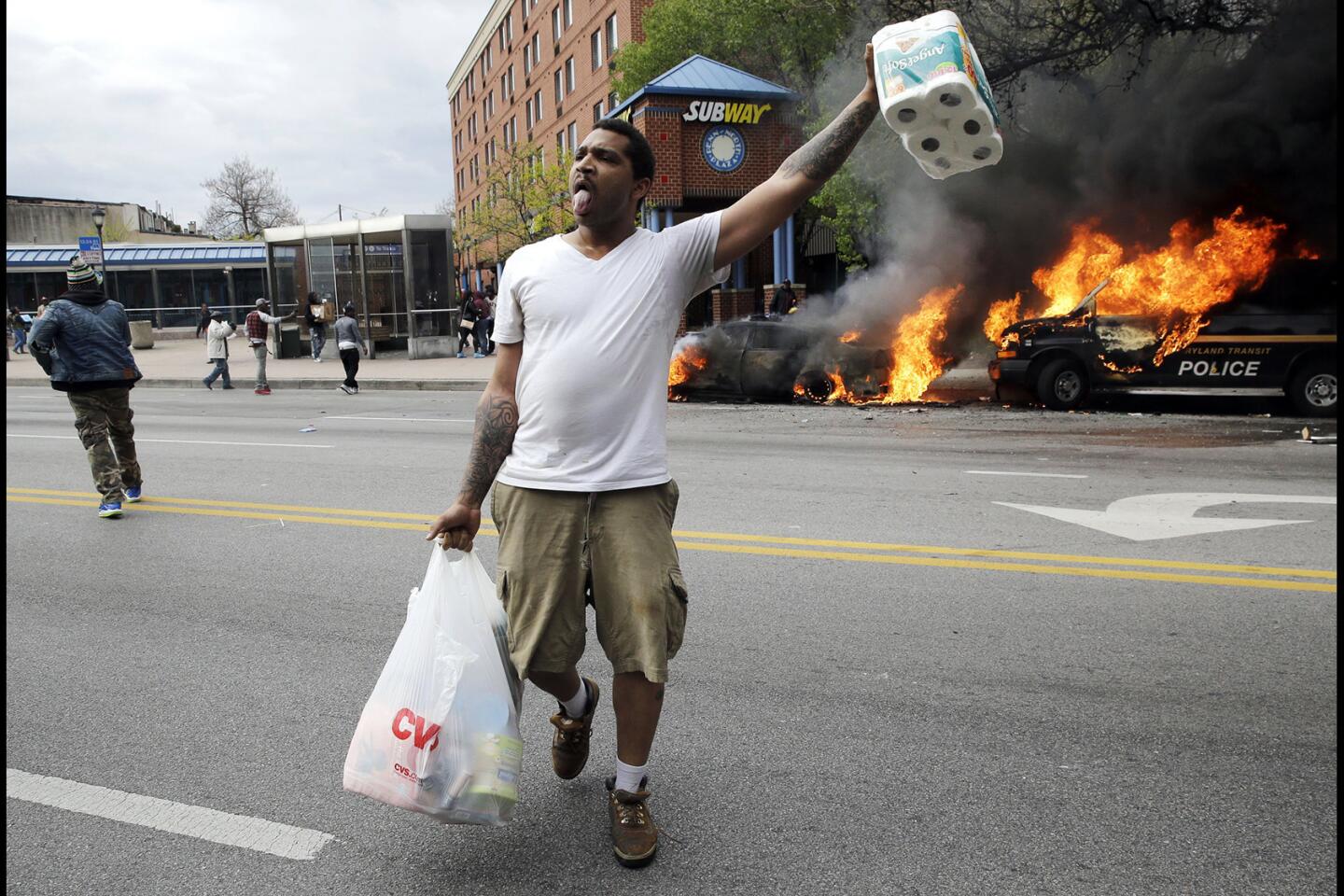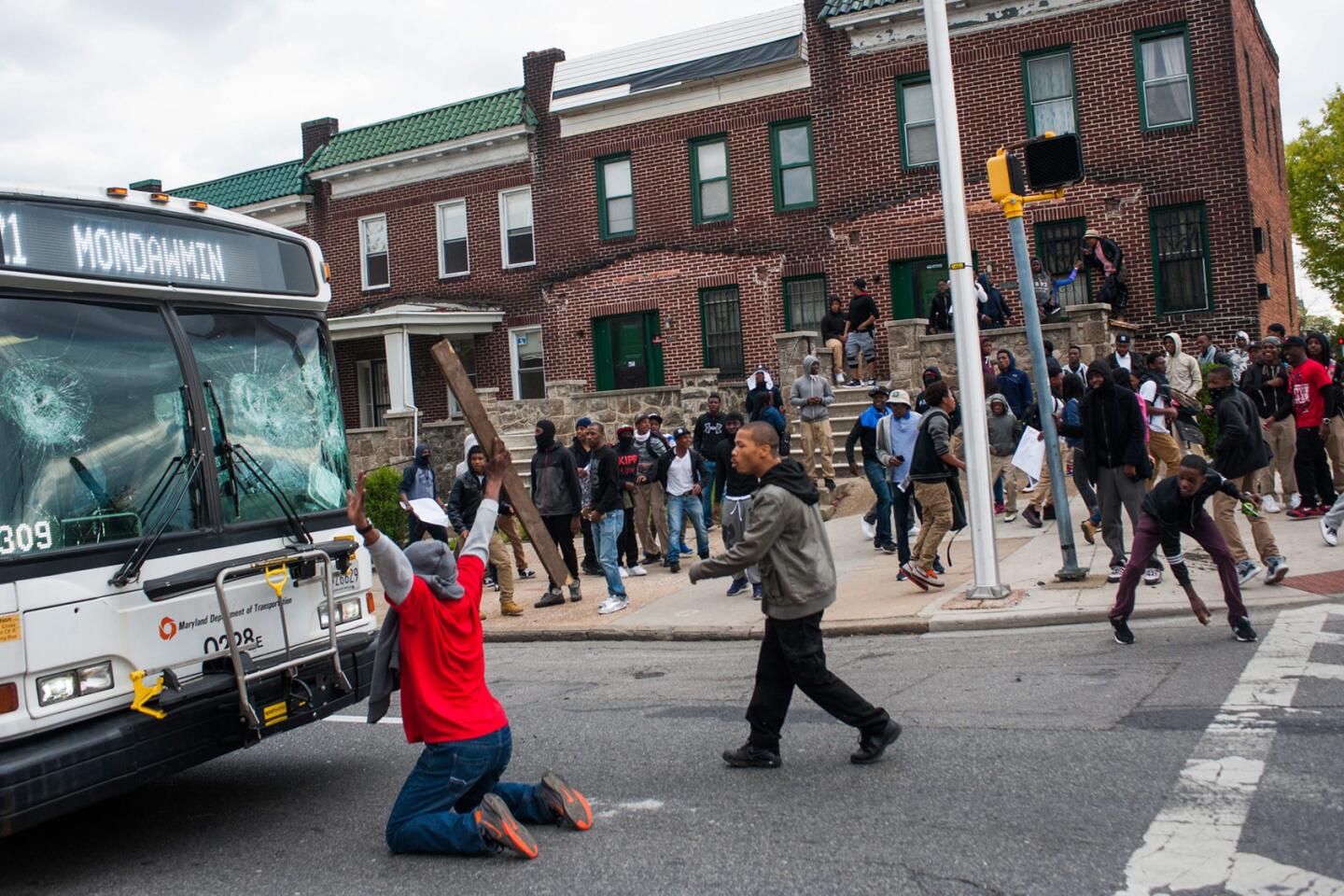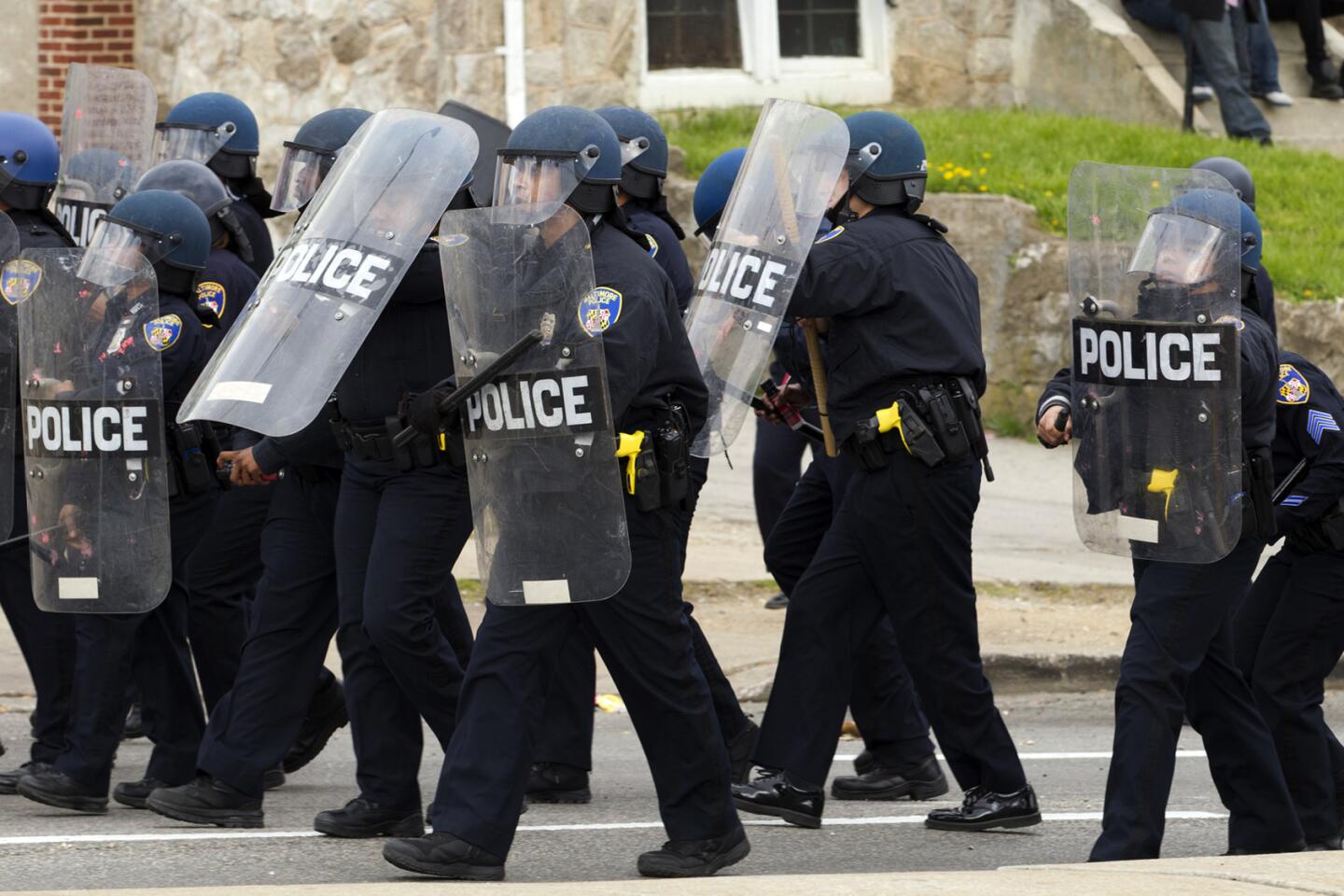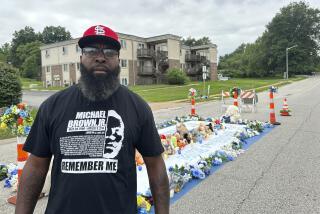Op-Ed: Baltimore and the language of change
- Share via
For the last half-century, invoking the Rev. Martin Luther King Jr. to condemn or explain black urban uprisings has been a mandatory exercise. Recent events in Baltimore are no exception. Critics say that destroying property and attacking police desecrate King’s ideals and draw attention away from constructive, peaceful protests; looters and “thugs” are blamed for derailing the “legitimate” path to justice. To defend (though not condone) spontaneous rebellions, others trot out King’s remark that “a riot is the language of the unheard.”
Whatever King might make of the fact that some Baltimore residents reacted violently to Freddie Gray’s death, the argument that rioters sabotage legitimate efforts at redress is hardly credible. If that were true, there would have to be something to sabotage — some evidence that these efforts were actually effective in bringing about change.
From 2011 to 2014, the city of Baltimore forked over $5.7 million to victims of excessive force, with no corresponding shift in police behavior. Nearly a week of nonviolent protests produced no explanation for Gray’s death, no adequate response from the city or police, and little media attention — except when the president of Baltimore’s Fraternal Order of Police described the demonstrators as a “lynch mob.”
By contrast, it was precisely the crisis generated by the violence in Baltimore that compelled States Atty. Marilyn Mosby to expedite her investigation and charge six officers with serious crimes ranging from assault to second-degree murder.
If a riot really is “the language of the unheard,” what have we failed to hear? In 1967, King spoke of the cries of the black poor in a society “more concerned about tranquillity and the status quo than about justice, equality, and humanity.” And in the aftermath of the 1968 Baltimore riots, sparked by news of King’s assassination, black residents registered “police practices” as their primary grievance.
These concerns are still with us. Today’s “unheard” repeat two mantras: Property matters more than black lives, and the police operate above the law. Besides a reputation for brutality, Baltimore’s finest resemble a street gang. In 2011, when former detective Joseph Crystal blew the whistle on two officers involved in beating a handcuffed suspect, Crystal was labeled a “snitch.” He was refused backup during drug busts, counseled by his union to change departments, and even had his security clearance withdrawn. He subsequently left the force and is now suing the Baltimore Police Department.
Gray’s death has made visible decades of unchecked police violence. In Baltimore and elsewhere, broken windows policing in practice is not about fixing things but about scaring people into submission in an effort to reduce crime without ever having to attend to the intolerable conditions that King described.
Fueled by the war on drugs, “zero tolerance” policing turns some neighborhoods into open-air prisons and strips vulnerable residents of equal protection, habeas corpus, freedom of movement, even protection from torture. Simply “loitering” in front of one’s residence can result in a citation or arrest, just as “running” in a “high crime area” — the act for which Gray was detained — constitutes probable cause.
This is not about crime; this is about criminalization. Yes, Gray had a record, like so many young black men in West Baltimore. But to be criminalized is to be subjected to containment, surveillance, and punishment — and deemed unworthy of protection.
The roots of current police policy can also be traced back to 1968. Just weeks before the rebellion, the Baltimore Sun ran an article about Police Commissioner Donald Pomerleau, who set out to create a department devoted to “service” rather than force.
He added more African Americans to the community relations board and even established “a Negro history course” to educate his officers. But reports of police misconduct dogged his department. As one independent investigator put it, “Police are thought to employ brutality frequently, and the backroom of the precinct house is known as a dangerous place for a black man.”
In the aftermath of the riots, the Maryland Crime Investigating Commission decided that aggressive policing, rather than jobs and social investment, could bring an end to civil unrest. The report recommended expanding the force, including more black officers, improving intelligence and crowd control training. It directed police to attack “any lawlessness ... quickly and aggressively.”
Strikingly, the report proposed reorganizing the force along military lines. The Baltimore police “lacked the command structure, the weapons, the knowledge of mass formation tactics which can disperse or contain an unruly mob.” One year later, the department announced it had invested heavily in military hardware, including tear gas grenades and “pepper foggers.”
Distinguishing between “thugs” and legitimate protesters, rioters and demonstrators, obscures more than it reveals. Despite Mosby’s announcement, everyone in the streets demanding justice for Freddie Gray, Eric Garner, Tamir Rice, Rekia Boyd, Michael Brown, ad infinitum, feels “unheard.” Their simple demand to “stop killing us” goes unheeded, as every day a new name is added to our gruesome body count. Whether we like it or not, these often unpredictable protests are not isolated acts of despair but a new movement attempting to bring the police into compliance with the principles of law, order and justice.
Robin D.G. Kelley is the Gary B. Nash Professor of U.S. History at UCLA and is completing a book titled “Mike Brown’s Body: A Meditation on War, Race, and Democracy.”
Follow the Opinion section on Twitter @latimesopinion and Facebook
More to Read
A cure for the common opinion
Get thought-provoking perspectives with our weekly newsletter.
You may occasionally receive promotional content from the Los Angeles Times.


